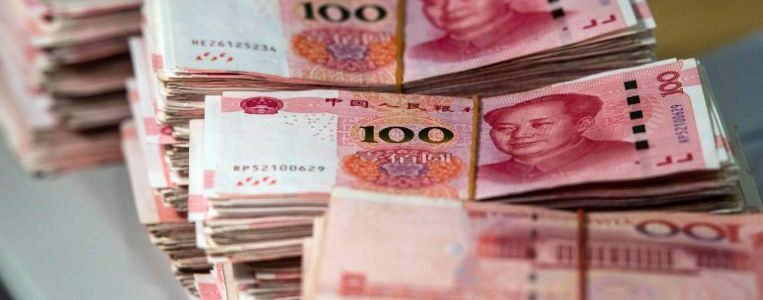
Renminbi hits 3-year high amid central bank easing bets
HONG KONG (BLOOMBERG) – China’s renminbi advanced to the strongest since May 2018, amid bets that the nation’s growth will remain strong on monetary stimulus and the new Covid-19 variant will not hamper global recovery. The onshore renminbi gained as much as 0.2 per cent to 6.3515 per dollar, breaching a year-to-date high reached in May.
The moves came as the dollar is poised to decline for a second week, amid optimism that Omicron will have only a limited impact on the global economy. Traders also became more confident that China’s growth would be solid after the central bank announced broad monetary easing this week.
The renminbi has gained 2.7 per cent this year, making it the best performer among major currencies, thanks to fund inflows driven by robust exports and foreign purchase of onshore bonds.
Confidence was further boosted this week when the Communist Party’s Politburo meeting concluded with a signal of more easing and a pledge to stabilise the economy next year. A lack of aggressive measures from the central bank to stall the advance also stoked bets that the appreciation would sustain.
“Full bore risk-on it is,” said Mr Alvin Tan, head of Asia foreign-exchange strategy at RBC Capital Markets. “The renminbi’s carry is very appealing. And it’s fair to say that the market remains impressed by the central bank’s tolerance of persistent currency strength.”
The renminbi gained 0.2 per cent to 6.3544 at 1.30pm in Shanghai. Chinese banks’ proprietary desks stepped up selling the dollar after the renminbi breached this year’s high, a move that triggered even faster appreciation in the currency, according to three traders. They asked not to be named as they are not authorised to talk about the foreign-exchange market publicly.
The outlook on the renminbi depends on how much tolerance the People’s Bank of China (PBOC) has for its strength. So far, the recent appreciation was met with only mildly weaker-than-expected fixings and a gentle reminder of not making one-way bets.
The policymakers may issue verbal warnings to contain the rapid advance, but will not take more aggressive measures such as requesting lenders to hold more dollars, according to Mr Ken Cheung, the chief Asia foreign-exchange strategist at Mizuho Bank.
The PBOC this week announced a cut to the amount of cash lenders need to set aside as reserves, suggesting Beijing is prioritising growth over a crackdown on the sprawling property sector and technology industry.
The looser monetary policy can act as a double-edged sword for the exchange rate in the medium term. While flush liquidity supply benefits the yuan by aiding growth, it could also hurt foreign demand for the currency, as it reduces China’s rate premium over the rest of the world.
“Going forward, foreign inflows and current account surplus may remain strong, as the emergence of Omicron may make countries more cautious about broad-based border reopening,” said Mr Carie Li, global market strategist at DBS Bank.
“If there is no sign of increasing bets on one-way appreciation for the yuan, with the currency showing two-way movement in a range, the moderate and gradual strength may not necessarily raise PBOC’s concern.”
On Wednesday, the Thai baht led gains among emerging Asian currencies with a 0.6 per cent advance, followed by a 0.3 per cent rise in the Malaysian ringgit.
Join ST’s Telegram channel here and get the latest breaking news delivered to you.
Source: Read Full Article